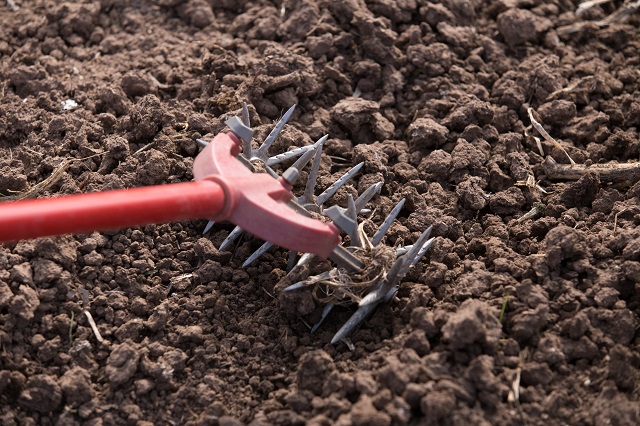
Native American people have been ‘organic’ gardening from the start. In the past, there were no greenhouses or feed stores to pick up extra plants, so it was important to learn how to effectively produce crops for their families. Traditions and seeds are still being handed down from older generations and managed with great care. Recently, there has been an increase in Natives across the United States awakening traditional gardening techniques to multiply seeds that were almost extinct.
“As Native people, we know the proper way to care for the plants so that we sustain ourselves and the plants that give us life,” said Andrew Gourd, Citizen Potawatomi Nation’s assistant tribal historic preservation officer and community garden coordinator.
“We understand that we have to honor these seeds and their purpose. They cannot be genetically engineered back to life or into more success. We must take care of what we have been given, or risk losing that medicine that has been given to us by our Creator.”
Gourd has compiled a few tips for tribal members who are starting their own spring gardens. First, he suggests going to get your soil tested at the local county extension office, where you can find out if you are missing important trace elements. Liquid iron, Epson salts and potassium sulfate are all important minerals that plants need to thrive. These nutrients can be purchased and only need to be added once a year.
“When working up the productivity of your soil, increase the organic matter content of the soil,” he said. “You can do this by mulching in fall leaves or old straw hay. Additives such as bone meal, blood meal or fish emulsion are also very effective organic fertilizers. In some soils that have a high clay content, mixing in sand will increase the permeability and allow water to get to the roots more efficiently.”
In Oklahoma, good spring crops include garlic, onions, potatoes, strawberries and some herbs. Summer crops are plants that thrive in the full heat of our Oklahoma summers, like gourds, squash, okra, tomatoes, melons, tobacco and various beans. These plants may not be phased by the heat, but they still drink a lot of water, so don’t forget to water them.
If you want the most success with minimal effort, Gourd suggests it is best to use plants that are native, or acclimatized to your location. For instance, in Oklahoma, gardeners usually have great success with sweet potatoes since they have a longer growing season. However, certain plants that prefer colder climates may have a harder time in the southern states and will require more care and attention.
“In our wildflower growing project we are only using seeds gathered from central Oklahoma and not ordering from the online nurseries. In order to get a higher degree of success we are using varieties and species known to be native to this portion of the country.”
Another approach that the CPN community garden is applying this spring, and one that Native people have been using for ages, is the three-sister’s method. This method of planting utilizes mounds that contain seeds for three varieties of food plants. The mounded earth would help keep the roots of the plants from getting too soggy during heavy rains. By putting the corn, beans, and squash together, they get the best product from each plant due to their symbiosis. The corn stalks provide structure for the beans to climb, while the beans put nitrogen back in the soil and squash provide groundcover that prevents weeds from overtaking the plants. After everything is harvested, the plants should be hoed and mulched back into the earth to contribute to next year’s soil.
If you are interested in getting involved with the CPN Community Garden, please visit cpn.news/garden.
